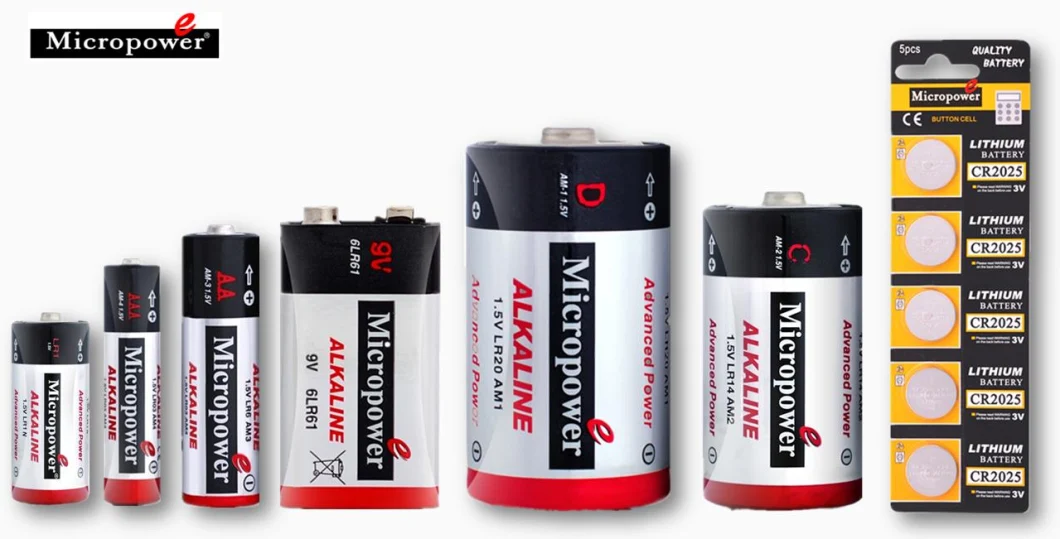1.5 Volt LR6 batteries, commonly known as AA batteries, are ubiquitous in modern electronics. These batteries power a wide range of devices from remote controls and flashlights to cameras and portable radios. Understanding the features, applications, and proper use of LR6 batteries can help you make informed decisions about their use and care. This article provides a comprehensive overview of what you should know about 1.5 volt battery lr6.

What Is an LR6 Battery?
1. Defining the LR6 Battery
The LR6 battery is a type of alkaline battery that provides a nominal voltage of 1.5 volts. The "LR" designation signifies the battery's chemistry—alkaline, with an alkaline electrolyte. The "6" in LR6 refers to the battery's size, which follows the standard AA dimensions.
2. Battery Chemistry and Construction
Chemistry: The LR6 battery uses zinc-manganese dioxide chemistry. It consists of a zinc anode, manganese dioxide cathode, and an alkaline electrolyte.
Construction: The battery is cylindrical, with a diameter of approximately 14.5mm and a length of about 50.5mm. Its compact size makes it suitable for a variety of devices.
Key Features and Specifications
1. Voltage and Capacity
Voltage: The LR6 battery delivers a nominal voltage of 1.5 volts. This stable voltage output is suitable for a wide range of low to moderate power applications.
Capacity: The capacity of LR6 batteries typically ranges from 1500mAh to 3000mAh. Higher capacity batteries can provide longer usage times between replacements.
2. Shelf Life and Storage
Shelf Life: Alkaline LR6 batteries have a shelf life of up to 5-10 years when stored properly. This long shelf life is one of the advantages of alkaline batteries over some other types.
Storage: To maintain their longevity, batteries should be stored in a cool, dry place. Extreme temperatures and humidity can affect performance and shelf life.
Common Applications
1. Consumer Electronics
Remote Controls: LR6 batteries are widely used in remote controls for televisions, audio systems, and other home electronics.
Flashlights: Many handheld flashlights rely on LR6 batteries for their bright and consistent light output.
Portable Radios: Radios and other portable audio devices often use LR6 batteries for their compact size and reliable power.
2. Toys and Gadgets
Toys: Many battery-operated toys use LR6 batteries due to their availability and ability to deliver consistent power.
Gadgets: Devices like digital thermometers, blood pressure monitors, and small handheld electronics often use LR6 batteries.
3. Medical Devices
Hearing Aids: Some hearing aids use LR6 batteries for their long-lasting power and compact size.
Portable Medical Equipment: Certain portable medical devices rely on LR6 batteries for reliable performance.
Advantages of LR6 Batteries
1. High Energy Density
LR6 batteries offer a high energy density, meaning they can store a significant amount of power relative to their size. This makes them ideal for devices that require a compact power source without sacrificing performance.
2. Cost-Effectiveness
Compared to other battery types, LR6 alkaline batteries are relatively inexpensive. Their cost-effectiveness makes them a popular choice for everyday devices and applications.
3. Wide Availability
LR6 batteries are widely available and come from numerous manufacturers. This widespread availability ensures that they are easy to find and replace when needed.
4. Non-Rechargeable Convenience
As non-rechargeable batteries, LR6 batteries offer the convenience of immediate use without the need for a charger. This is particularly useful for devices where battery replacement is infrequent.
Proper Usage and Care
1. Installation
Correct Polarity: Always insert LR6 batteries with the correct polarity, aligning the positive (+) and negative (-) terminals as indicated in the device. Incorrect installation can lead to poor performance or damage.
2. Avoid Mixing Batteries
Same Brand and Age: Avoid mixing old and new batteries or different brands in the same device. Using batteries of different ages or types can cause uneven power distribution and reduce overall performance.
3. Device Maintenance
Remove Batteries from Inactive Devices: If a device will not be used for an extended period, remove the batteries to prevent leakage and corrosion. This helps preserve the batteries' charge and prevents potential damage to the device.
Environmental Considerations
1. Battery Recycling
Recycling Programs: Many communities offer battery recycling programs to properly dispose of used LR6 batteries. Check local regulations and participate in recycling programs to minimize environmental impact.
2. Avoid Regular Trash
Proper Disposal: Do not dispose of LR6 batteries in regular household trash. Proper recycling helps reduce environmental pollution and conserve resources.
Potential Issues and Troubleshooting
1. Leakage
Causes: Battery leakage can occur due to overuse, improper storage, or expiration. Leakage can damage devices and create hazardous waste.
Prevention: Store batteries in a cool, dry place and avoid exposing them to extreme temperatures. Check devices regularly for signs of battery leakage and replace batteries promptly if necessary.
2. Reduced Performance
Causes: Reduced performance can result from using old or low-quality batteries, or from devices with high power demands.
Solutions: Use high-quality batteries from reputable brands and ensure they are compatible with your device. Replace batteries promptly when performance declines.
Conclusion
The 1.5 Volt LR6 battery, also known as the AA battery, is a versatile and widely used power source in modern electronics. Understanding its features, advantages, and proper usage can help you make the most of this reliable power solution. By adhering to best practices for installation, storage, and disposal, you can maximize the performance and lifespan of LR6 batteries, ensuring they provide consistent power for your devices while contributing to environmental sustainability.
